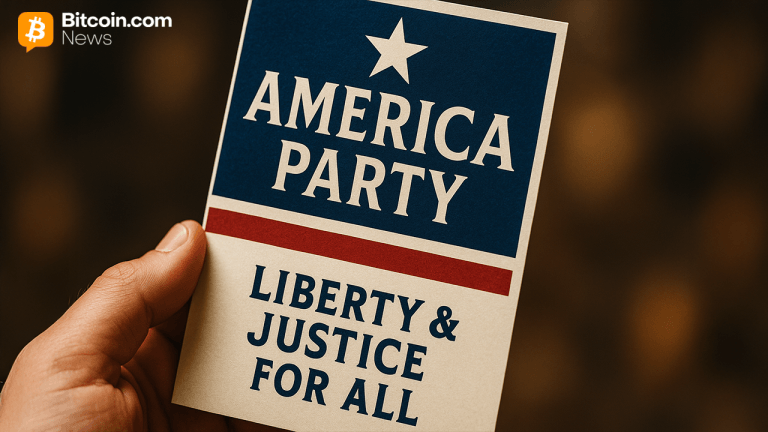The complex legal questions underpinning muni market rulemaking
8 min read

A recent rule reversal may have nullified a dispute between municipal market rulemakers and an outspoken trade organization, but the question raised amid the scuffle is whether the sector’s regulators are constitutional at all.
The debate sparked anew when the constitutionality of self-regulatory organizations, or SROs, was challenged in a lawsuit brought by the American Securities Association earlier this year. The organization was protesting a new rule from the Financial Industry Regulatory Authority and Municipal Securities Rulemaking Board requiring that dealers report trades within one minute of execution.
SRO proponents have long maintained that their unique structure allows for more nimble rulemaking. The structure of SROs allows for more efficient regulation by actual industry practitioners, the argument for them goes, while promoting compliance without necessarily requiring serious enforcement actions like those brought by federal agencies. But a newly emboldened crop of critics argue that SROs are inherently problematic because they wield the powers of government without the associated constraints.
The sentiment is being propelled by an offbeat alliance: market participants upset by regulations are being supported by an array of political advocates in the conservative legal movement, who say the unorthodox rulemakers are an example of an overbearing “administrative state” that must be reigned in. Similar arguments can be found in the legal filings of a broker accused of stealing from clients and the controversial right-wing political playbook Project 2025.
Their partnership is well-timed, experts say, as the executive branch and federal judiciary have increasingly embraced the legal theories at the center of their argument. Still, it’s unclear when, if ever, the dispute will be truly resolved.
In the meantime, there are fears that rulemaking will be affected by its very existence. Legal experts say that unresolved questions about these regulators’ legality could easily have a chilling effect on new rules that aren’t popular with market participants.
A misguided resolution to the debate, though, could be worse, they say, with projections of grave financial consequences and an uncertain outlook for the Federal Reserve if the Supreme Court were to rule with those who say the regulators must be reformed.
The rulemakers had started rolling back the proposed one-minute reporting time before anyone even made an argument in court. Then, in February, the ASA filed its
That interaction could have major repercussions for SROs, said Benjamin Edwards, a professor of law at the William S. Boyd School of Law at the University of Nevada, Las Vegas. The rulemakers appear to have avoided the ASA’s challenge in this case, but Edwards said he wonders what their capitulation means for the next one.
“The challenge now is what does (an SRO) do next time they want to make a rule that will impact someone who can hire lawyers to again make this argument for them?” said Edwards, who practiced as a securities litigator before moving to academia.
Under normal circumstances, an unpopular rule could only be challenged in court if someone can complain that the rule itself infringes on their rights or violates the law, said James Tierney, a professor at the Chicago-Kent College of Law who studies SROs. But if the SROs are on shaky constitutional footing, anyone unhappy with a rule can challenge the rulemaker’s very ability to create it, no matter the actual merits of the rule, he said.
In practice, he said that could mean SROs will become lethargic enforcers, trying not to push boundaries or ruffle feathers for fear of new lawsuits raising the issue of their existence.
“If you want SROs to be innovative and entrepreneurial and push the regulatory boundaries, then you do want them to get finality on these issues,” said Tierney, who previously practiced in the SEC’s Office of the General Counsel.
There have been critics of SRO authority since they started regulating the financial industry nearly a century ago, Tierney said. But, their ideas have yet to find a political moment so suited to them.
In recent years, the conservative Supreme Court majority has repeatedly ruled in line with the “unitary executive theory” espoused by many opponents of SROs, simultaneously
“There’s nothing new about these ideas, but for many decades there was not a court majority willing to do these things,” he said.
Even so, a seemingly aligned Supreme Court isn’t necessarily a guarantee for SROs’ critics.
For one thing, no one can be sure that the court will rule against SROs, even if doing so might fall in line with some recent rulings. Edwards said he could see the court being split 5-4 either way on the issue.
The court would also have to choose to examine the issue, and that too is unpredictable, Edwards said. In fact, the court just
The ASA’s challenge to the MSRB’s constitutionality was backed by multiple amicus briefs, a document submitted by a “friend of the court” who isn’t actually involved in a case, but has an interest in the outcome or expertise on the matter.
One such brief – signed by 35 individuals and organizations – drew on a mix of historical documents and legal precedent to argue that the framers of the constitution undeniably “understood themselves to be creating a unified, or unitary, executive as opposed to a multimember executive council.” Since then, that vision has been corrupted by an unrestrained “administrative state,” the brief argued.
Because the president can only fire SEC commissioners for cause, and because the MSRB they oversee is self-appointing and protected from presidential removal, SROs are a “usurpation” of the president’s rightful power, that brief argues.
Among the signees are conservative legal organizations, campus conservative organizations like Young America’s Foundation, religious organizations like the National Religious Broadcasters, and others. It was written by lawyers for Advancing American Freedom, Inc., who did not respond to requests for comment.
The brief was also signed by individuals, including conservative communications consultants, a former speaker of the Missouri state house, and Rick Santorum, a former Pennsylvania senator and Republican presidential candidate.
Some said they signed on in the interest of market competitiveness and fairness. Strict MSRB rules could come with a cost, especially in a bilateral market like munis, said Ross Marchand, a senior fellow at the Taxpayer Protection Alliance, which signed on to the brief. Big institutions may be able to easily absorb that, but small firms could be pushed out of the market by the expense of complying, he said.
Another amicus brief tries to stake out a sort of middle ground, proposing a reform of the MSRB’s authority rather than the elimination of SROs altogether.
The central constitutional issue, conservative think tank Cato Institute’s brief suggests, is that MSRB board members who are not presidentially appointed get permission to make rules from protected officials inside the SEC who report to commissioners who also have for-cause removal protections. Thus, “all the parties who promulgated the one-minute rule operate independent of executive branch control.”
In that distinction lies a solution, said Thomas Berry, the attorney at Cato who wrote the amicus brief. While some suggest that the MSRB must be eliminated altogether, Berry said the issue could be more easily resolved by keeping the MSRB around largely as is, but mandating that SEC commissioners approve all MSRB decisions and that they are more easily removable by the president.
“Unitary executive theory doesn’t mean we have to get rid of expertise, it just means the final accountability to say yes or no to recommendations needs to be in the hands of someone the president appointed and can fire,” he said. “My real focus is on the blame for the final decision.”
Federal courts have signaled that SEC approval may be a path forward in the debate, said Tierney, the Chicago-Kent School of Law professor. In the broker expulsion case that the Supreme Court passed on, for example, the U.S. Court of Appeals declined to say FINRA was altogether unconstitutional, but did fault the organization for its practice of expelling members without contemporaneous SEC approval. Since then, FINRA has proposed a new rule that would mandate just that.
“Can we avoid this question altogether by just saying the SEC always gets the last bite of the apple?” Tierney said. “That might be a pathway for SROs going forward.”
Attempts to eliminate the SROs could also have serious implications for the Federal Reserve.
The protections that insulate the central bank’s decisions from political influence make it similar to SROs, said Edwards, the UNLV professor. But, he said even those who can stomach arguments that SROs like FINRA and the MSRB are unconstitutional may not be comfortable applying the same logic to the Fed.
“There’s a reality that blowing up the Fed and giving the president the power to set interest rates would be very bad for the United States,” he said. “I think everybody understands that.”
But, Edwards said he isn’t sure “how would you be able to meaningfully, and in a somewhat principled way, distinguish the Fed from FINRA or the MSRB.”
The Supreme Court touched on the issue in its
In explaining that decision, the court chose to address why Trump couldn’t do the same to protected governors of the Fed, a move he has been publicly weighing in recent weeks. The decision did not necessarily argue that there is anything truly different about the Fed’s structure or powers.
Instead, the court focused on its pedigree, calling it a “uniquely structured, quasi-private entity that follows in (a) distinct historical tradition.”
Not everyone was on board with the tedious distinction. In a
Even setting the Fed aside, any change to the SRO system could have grave financial consequences, said Edwards. In a recent law review article, he argued that a Supreme Court decision declaring SROs unconstitutional or limiting their powers would “generate systemic risk and may trigger a financial crisis.”
The best way to resolve the issue entirely would be a constitutional amendment addressing SROs and the Fed, Edwards said.







